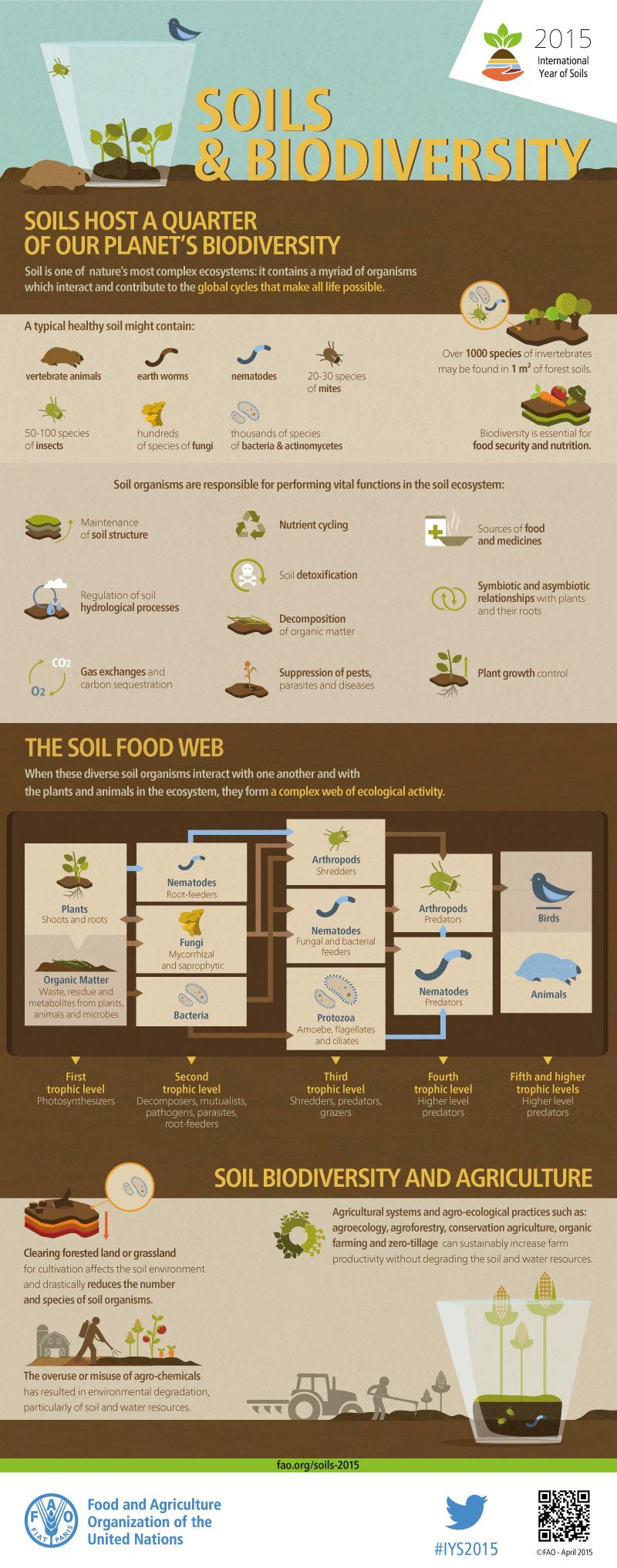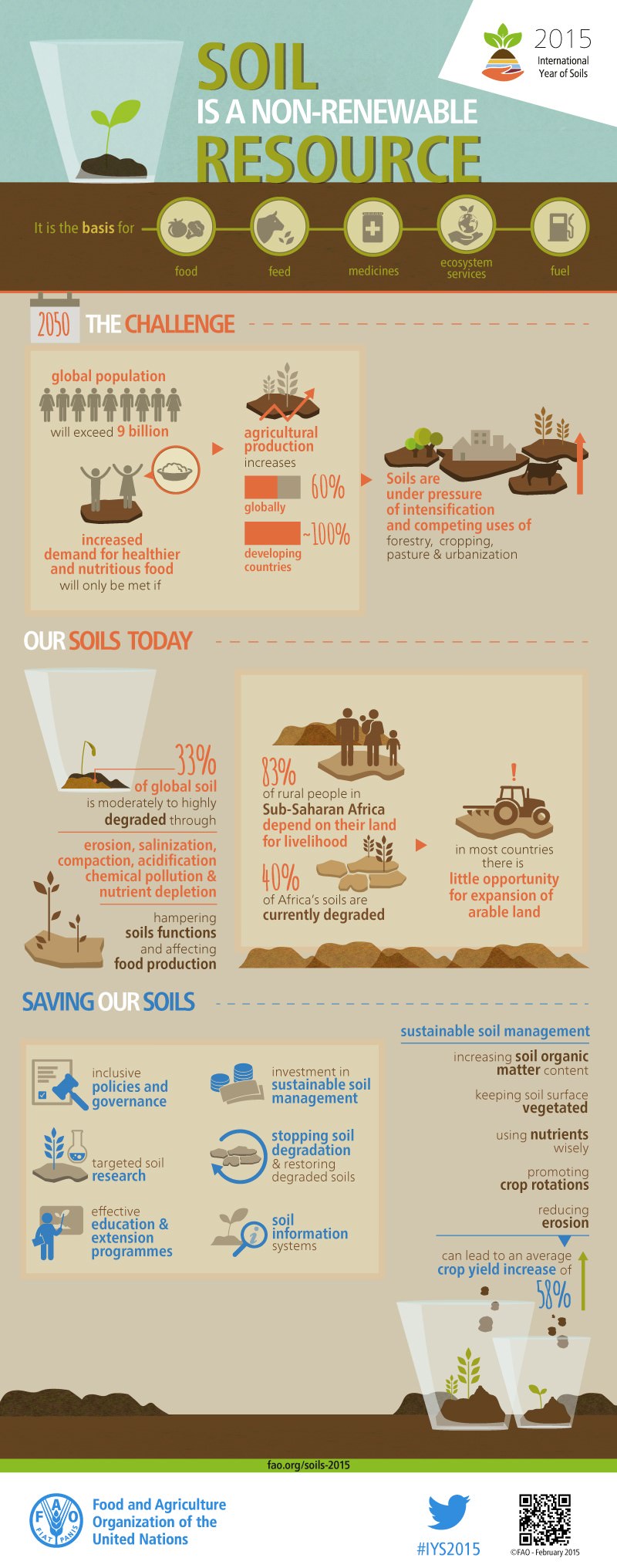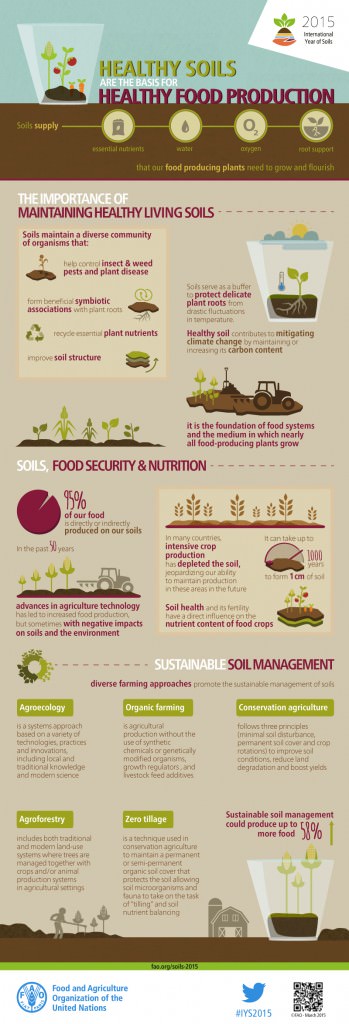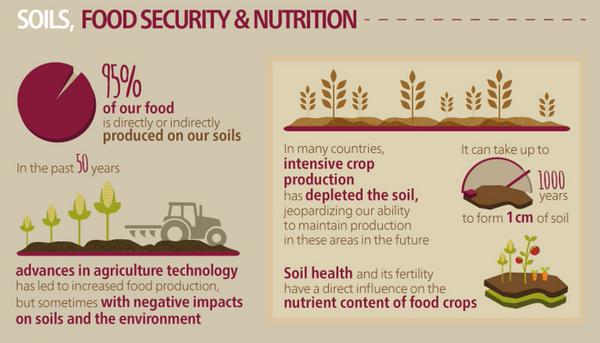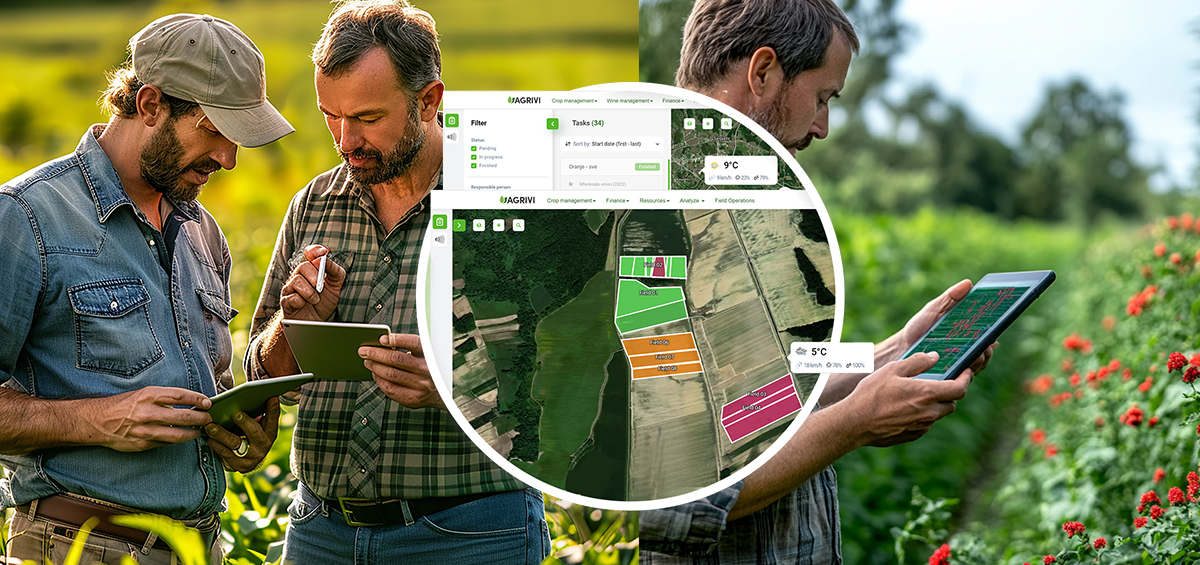There can be no life without it, it feeds us and we are responsible for it! Soil is formed from rocks that are decomposed slowly by sun, the wind and the rain, by animals and plants. But it is in danger because of expanding cities, deforestation, unsustainable land use and management practices, pollution, overgrazing and climate change. The current rate of soil degradation threatens the capacity to meet the needs of future generations. The promotion of sustainable soil and land management is central to ensuring a productive food system, improved rural livelihoods and a healthy environment.
Soil is an important part of our life in which it plays many roles:
Soil support our planet’s biodiversity and they host a quarter of the total
Soils host a quarter of our planet’s biodiversity. It’s one of nature’s most complex ecosystems: it contains a myriad of organisms that interact and contribute to the global cycles that make all life possible.
Soil is a non-renewable resource, its preservation is essential for food security and our sustainable future
Soil is a finite resource, meaning its loss and degradation is not recoverable within a human lifespan. As a core component of land resources, agricultural development and ecological sustainability, it is the basis for food, feed, fuel and fibre production and for many critical ecosystem services. It is therefore a highly valuable natural resource, yet it is often overlooked.
Healthy soils are the basis for healthy food production
Healthy soils are the foundation of the food system. They are the basis for agriculture and the medium in which nearly all food-producing plants grow. Healthy soils produce healthy crops that in turn nourish people and animals. Indeed, soil quality is directly linked to food quality and quantity.
Soils are the foundation for vegetation which is cultivated or managed for feed, fiber, fuel and medicinal products
Soils and vegetation have a reciprocal relationship. Fertile soil encourages plant growth by providing plants with nutrients, acting as a water holding tank, and serving as the substrate to which plants anchor their roots. In return, vegetation, tree cover and forests prevent soil degradation and desertification by stabilizing the soil, maintaining water and nutrient cycling, and reducing water and wind erosion.
Soils help to combat and adapt to climate change by playing a key role in the carbon cycle
Soil organic matter is one of the largest carbon reservoirs that is in rapid exchange with atmospheric CO2, and it is thus important as a potential source and sink of the greenhouse gas over time scales of human concern.
Soil store and filter water improving our resilience to floods and droughts
Soil is the heart of a healthy ecosystem. One of the primary functions of soil is to capture precipitation, storing water for plants to use at a later day. One of the other primary functions of soil is the ability to cleanse this drainage water. The significance of the soil’s role as the earth’s primary filter is becoming increasingly recognized, as we work towards reducing the impacts on water quality of intensive rural and urban land use.
Sources: FAO publications

